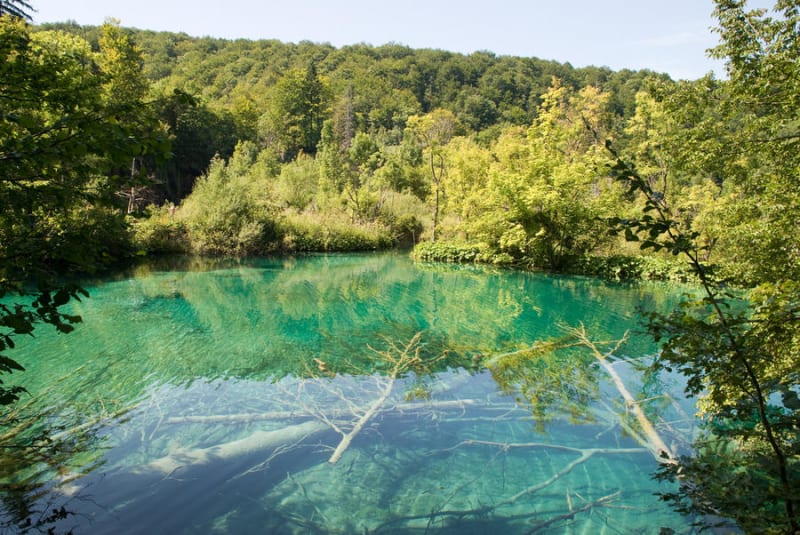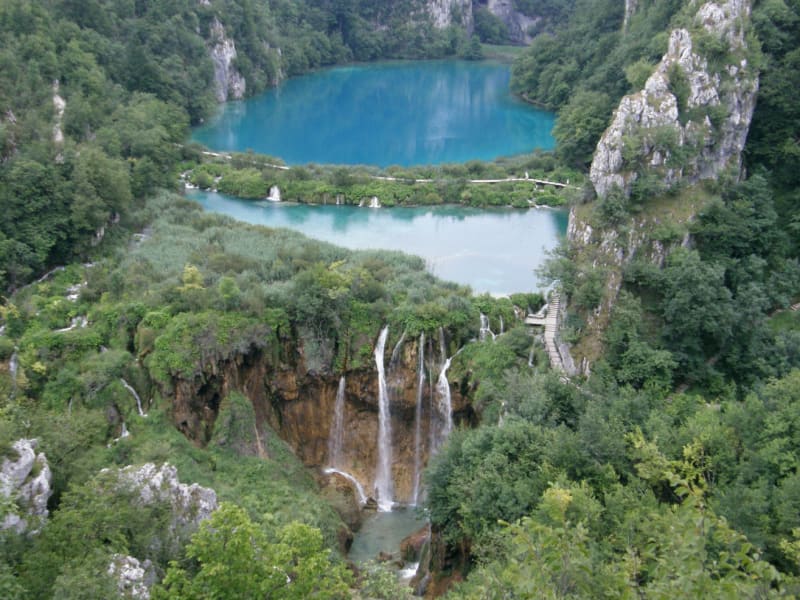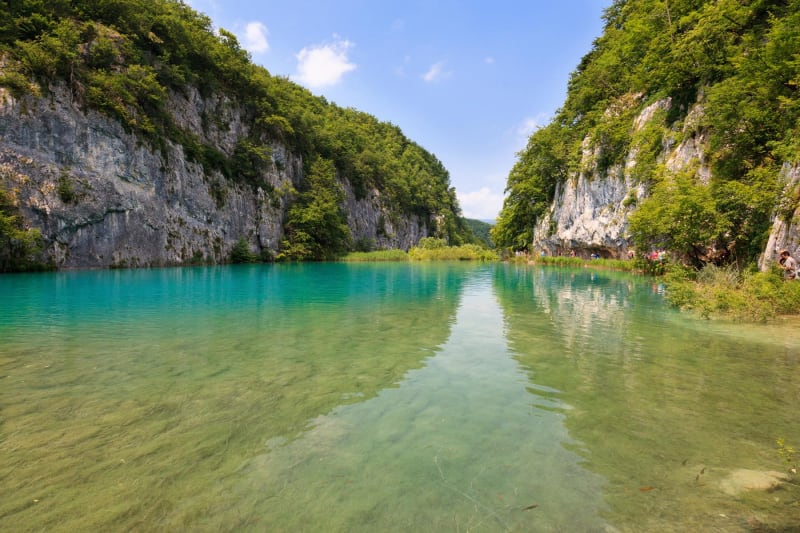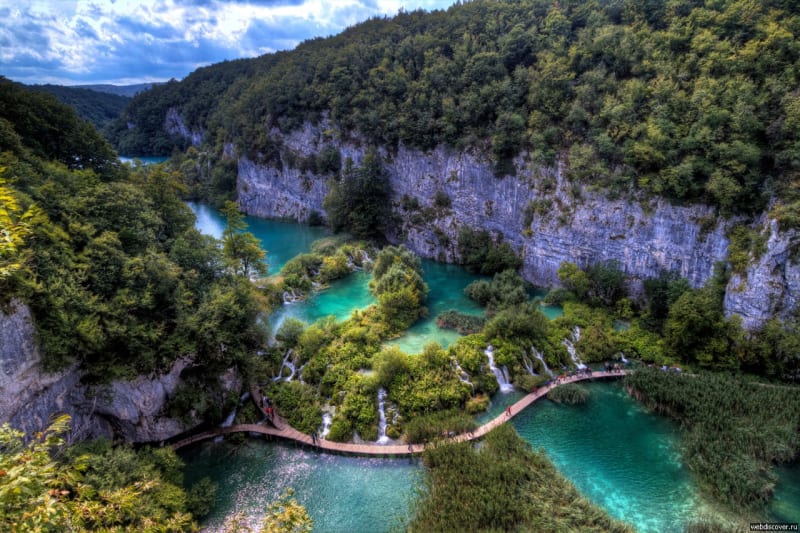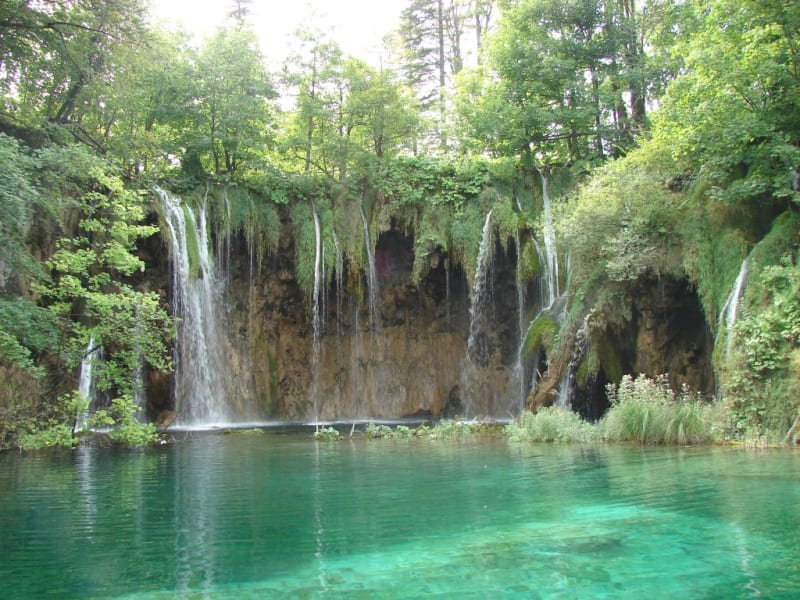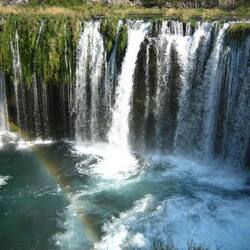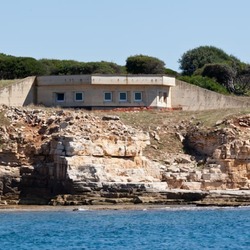Plitvice Lakes National Park
Plitvice Lakes is a national park of Croatia in its central part. The park is unique in its structure of its mountains, which consist of limestone. The waters of the Koran River and 30 other smaller rivers, groundwater and rainwater have been washing away limestone for thousands of years, leaving a large number of streams and channels, creating travertine dams that have created cascades of wonderful waterfalls, caves, and lakes.
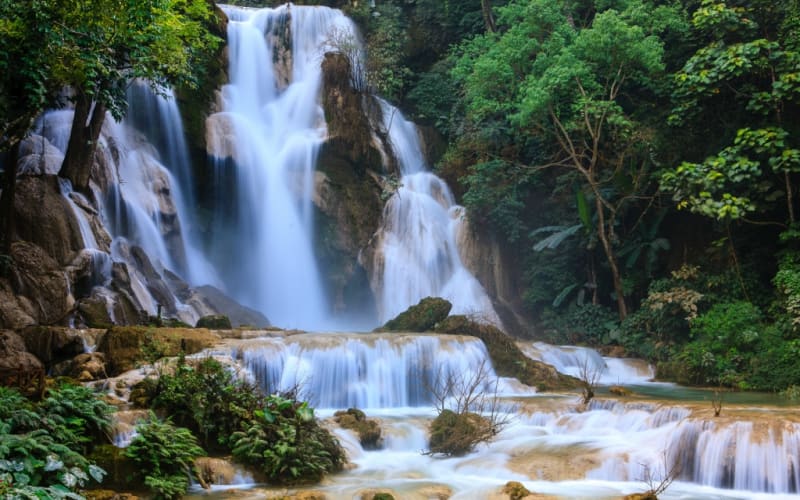
Water with dissolved carbonates gives the Plitvice lakes an unusual color. The park is spread over an area of 297 km2 in a mountainous area with the highest point of Mount Mala Capela (1280 meters).
According to scientists, the lakes are over 4,000 years old, but nevertheless the area was discovered only 400 years ago. Lake Proshansko is the largest lake, it is fed by the waters of the rivers Crna and Bijela. There are 12 lakes in the upper part of the Plitvice Lakes valley, the largest of which is Lake Kozyak, 46 meters deep and 82 hectares in area. The upper lakes end with a large waterfall falling into the canyon. The canyon contains the lower lakes, which form the Koran River below. The total length of all lakes is 8 km, and they cover an area of 2 km2.
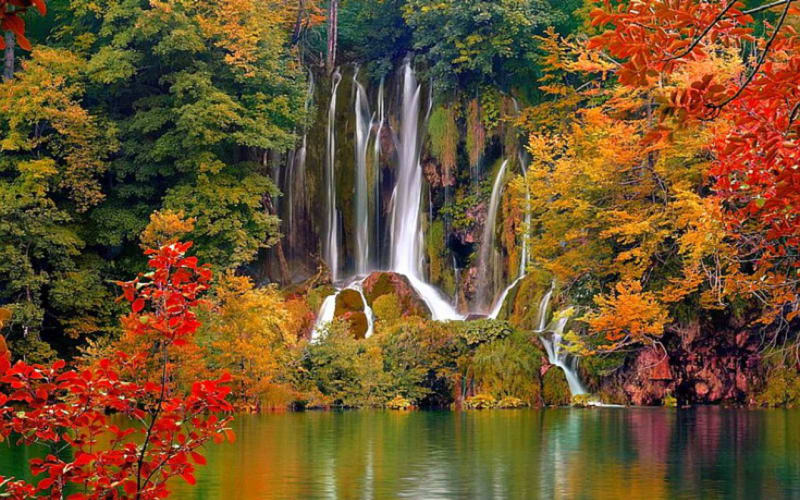
In 1991, the park became the scene of fighting between Croats and Serbs. These events are known as the "Plitvice Bloody Easter". There were several armed conflicts in these places during the Yugoslav War. Now the park is safe for visitors after the mine clearance.
Flora and fauna of the Plitvice Lakes
In Plitvice Lakes Park, it is also worth taking a walk through the untouched beech and fir forests, which are home to a huge number of animals such as bear, fox, hare, marten, wolf, roe deer, hedgehog, wild boar. There are also 120 species of birds in the park, and a large number of fish in the lakes that follow visitors in the hope of getting treats. The walk will leave an unforgettable impression: the virginity of nature, the clean air, the purest emerald water, waterfalls, the amazing smell of flowers give a feeling of unity with nature.
The formation of waterfalls in the Plitvice lakes
As the water evaporates, it leaves behind crystals of calcium and magnesium, which eventually turn into a travertine stone. The formation of travertans is facilitated by bacteria living in the lake, which absorb carbonates during their lifetime, leaving behind mineral deposits. This process proceeds very quickly, in a year a tree that has fallen into the water will be completely covered with minerals and will gradually begin to turn to stone. Fallen branches and leaves block the path of the water, forming travertine waterfalls, but nevertheless the water erodes them, bumping into new barriers and forming new waterfalls. Because of this, the appearance of the waterfalls changes almost every year.
The park is quite interesting for speleologists, as there are 20 caves on its territory, and the most attractive of them are those located under waterfalls. Among the caves, Shuplyara, Crna Pechina, and Golubnyacha are especially popular. The climate in the Plitvice Lakes differs from the rest of the country, as it is located at the junction of the continental and marine zones. The air here is 3-5 °C cooler even on a sunny day than on the coast. A lot of snow falls during the winter months, and in January the lakes are covered with ice.
Plitvice Lakes Park is visited by more than 1,000,000 tourists every year. The Croatian authorities are trying their best to preserve the unique nature of these places, for example, in the park you can only travel by environmentally friendly means of transport. Even ferries and pleasure boats are powered by electricity. It is also forbidden to swim in the park, bring dogs with you, or light a fire.
